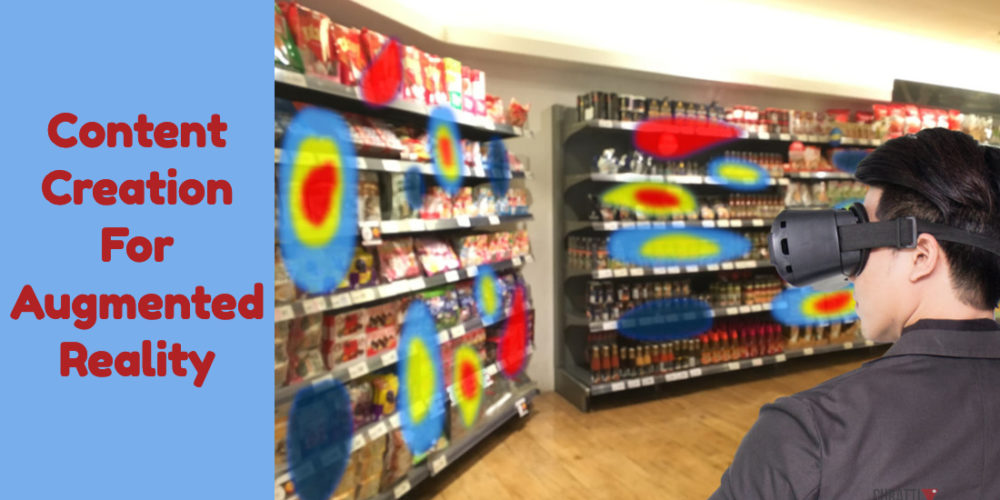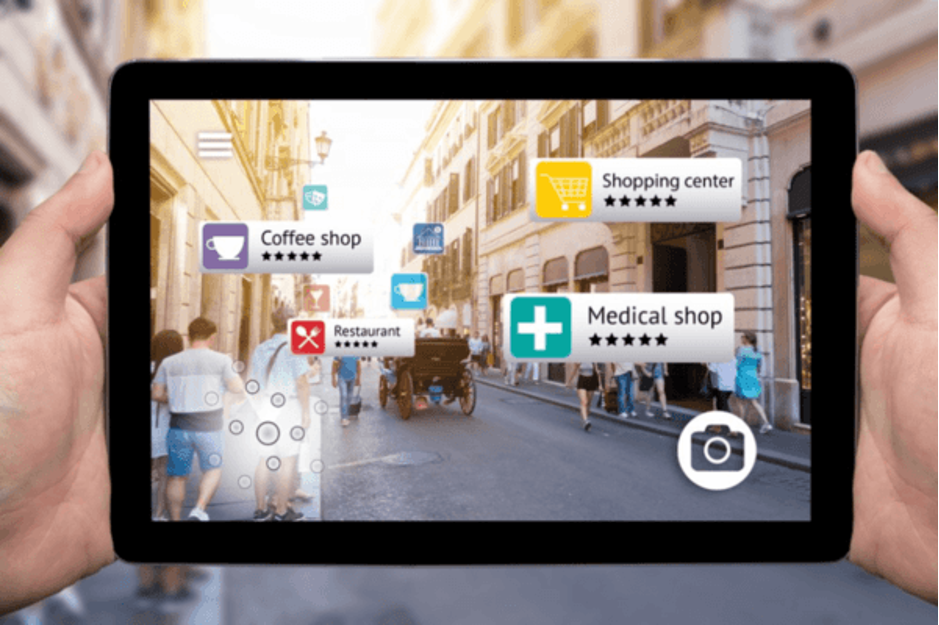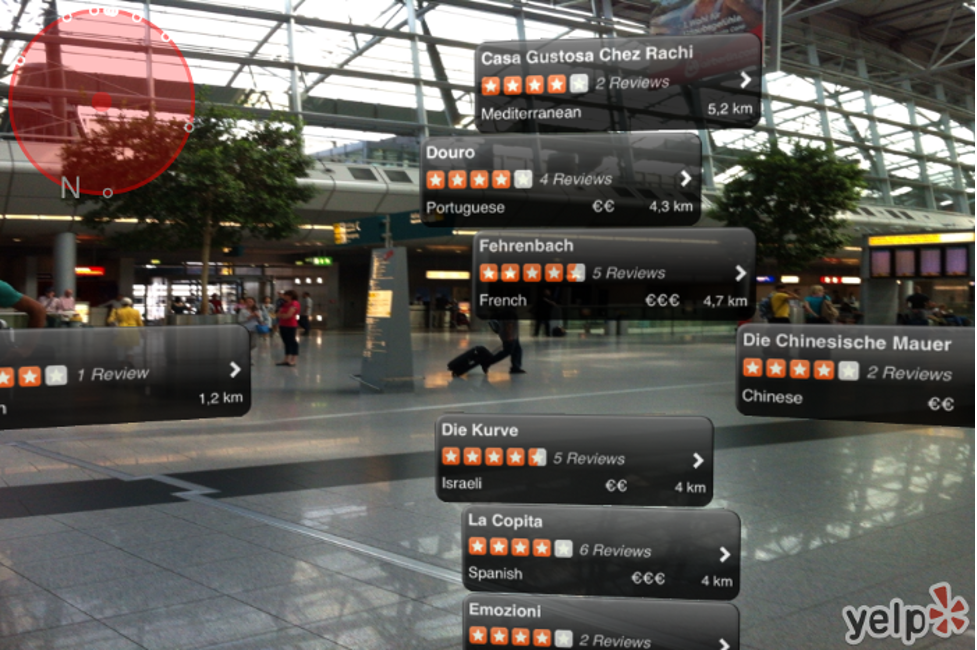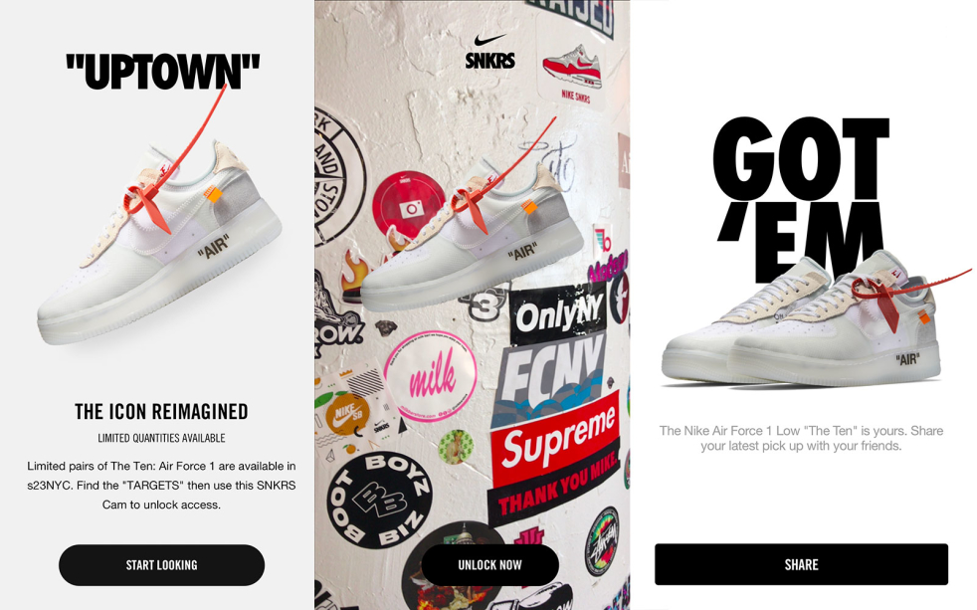Augmented Reality Content Creation: What Goes On Behind The Scenes?

There is fact, then there is fiction. Then there is a world that hits the middle ground between both fact and fiction. Augmented reality is ushering the world into that world where our true reality merges with a digital reality.
Sounds complicated? Let me break it down. We have physical objects like buildings, things, people, signs, strewn all around us. Augmented reality makes it possible to overlay digital information on top of these physical objects using data markers. When a user points a screen, like a smartphone or a tablet at the object, a digital snippet is placed on top of the physical object as seen through the screen.
Here is an example of an AR visual representation:

Source: Colocation America Inc
Now, here is the tricky part. Unlike other forms of media, creating content for augmented reality is not easy. One primary reason is that one cannot expect users to have smartphones with advanced media capabilities. Also, the content cannot be restricted to specific domains or use cases.
That demands the need for specific tools and know-how for augmented reality app development. Thanks to the growing awareness of immersive reality and its ability to hook users, we have more than enough tools to create content for augmented reality.
You may also want to read: What Augmented Reality Means for Brands
Tools Used for Augmented Reality Content Creation
At the onset, there are SDKs (Software Development Kits) available for augmented reality app development. Some of the popular SDKs include:
Of course, like SDKs, they help only in automating the app development side of augmented reality. These tools work in conjunction with AR systems to bring augmented reality content to life. Some of such AR systems are detailed as below:
Geospatial Systems
Geospatial systems work with the aid of GPS systems. These systems pick up location details by scanning real-world objects or locations and overlay digital information over them.
For example, someone who points their phone camera at the Eiffel Tower would be able to read a digital snippet containing the name of the landmark, its location, or other digital snippet provided in the content.
Yelp’s Monocle is a perfect example of geospatial systems-based augmented reality. Monocle is a feature that allows users to view business details by pointing their camera at their physical surroundings.

Source: NewCo Shift
2D Systems
2D systems are used for AR content authoring that need certainty. For instance, these systems are designed to let the user detect an object, frame, or an image within the frame. The AR system detects the object and renders it as a 3D model, web page, or as video.
To cite an example, Nike used 2D systems to create an augmented reality that makes it easy for customers to find the right sneakers. Called Nike SNKRS, the app required users to go to the product page and click on the start button. Next, when they come across a physical sticker of Nike, they have to point the camera at it and tap on “unlock” to buy the shoes.

Source: Engadget
3D Systems
Geospatial and 2D systems are like the basic versions of immersive content when compared to 3D systems. In fact, it is 3D systems that give augmented reality the competitive advantage that makes it a perfect fit for industrial and entertainment applications.
Be it in research labs where scientists tinker with new innovative designs or manufacturing lines where employees are trained for the perfect assembly of components, it is the 3D version of augmented reality that makes a difference.
Augmented Reality content authoring tools like Atheer’s AiR Suite, Wikitude Studio, NGRAIN’s Vergence, APX Labs’ Skylight, etc. are all used in this process.
Volkswagen’s assembly lines that use the Marta app enables technical workers to carry out car performance operations quickly. The app’s projector overlays AR images on physical car casts that help them evaluate the design options and carry out necessary mechanical implementations immediately.

Source: Volkswagen
You may also want to read: The Future of Augmented Reality With Search Engine Optimization
Merging Media With Reality – Tools Used for Augmented Reality Authoring
That said, creating visual content for augmented reality is not an easy task. Especially today, when digital content is consumed through various forms like wearables, smartphones, tablets, kiosks, etc. creating uniform and consistent AR content is extremely difficult.
AR content is more like video. It is static, yet it has motion. Perhaps, that is why it needs a combination of 2D and 3D modeling tools like CAD software.
This type of software creates a flux of images, charts, interfaces, models, or in short, immersive content that the app will overlay over geospatial location or objects. Before overlaying the data, the files are encoded and turned into small-sized files that can be viewed over smartphone screens.
In the future, the same CAD software might have advanced features that enable them to create enriched 3D models for AR content. At the juncture, content from diverse forms like 3D scans, CAD databases, computer games, motion capture data, etc. will also be looped into the AR content form.
Conclusion
The first film was released in 1895. It opened up a whole new world of entertainment. By 2025, or even earlier, Augmented Reality will open up a whole new world where the differences between physical and digital realities will be blurred.
AR content will be enriched with diverse forms of content sourced from devices that we use on a daily basis. AR content authoring tools will enable developers to turn such content in immersive reality content.
 Tuhin Bhatt is one of the co-founders of Intelivita, a digital transformation place to hire dedicated mobile app developers. Tuhin usually writes on cutting-edge technologies, future-ready development practices, eye-opening leadership principles, and trending entrepreneurial skills. You can connect with Tuhin on LinkedIn here, follow him on Facebook here, or follow/tweet him @BhattTuhin
Tuhin Bhatt is one of the co-founders of Intelivita, a digital transformation place to hire dedicated mobile app developers. Tuhin usually writes on cutting-edge technologies, future-ready development practices, eye-opening leadership principles, and trending entrepreneurial skills. You can connect with Tuhin on LinkedIn here, follow him on Facebook here, or follow/tweet him @BhattTuhin
Sign Up For Our Mailing List
If you’d like to receive more in-depth articles, videos, and Infographics in your inbox, please sign up below. We’ll also keep you abreast of our upcoming soup-to-nuts blogging class.

Sign up for the newest articles from Curatti, delivered straight to your inbox
Featured image: Copyright: ‘https://www.123rf.com/profile_ekkasit919‘ / 123RF Stock Photo
